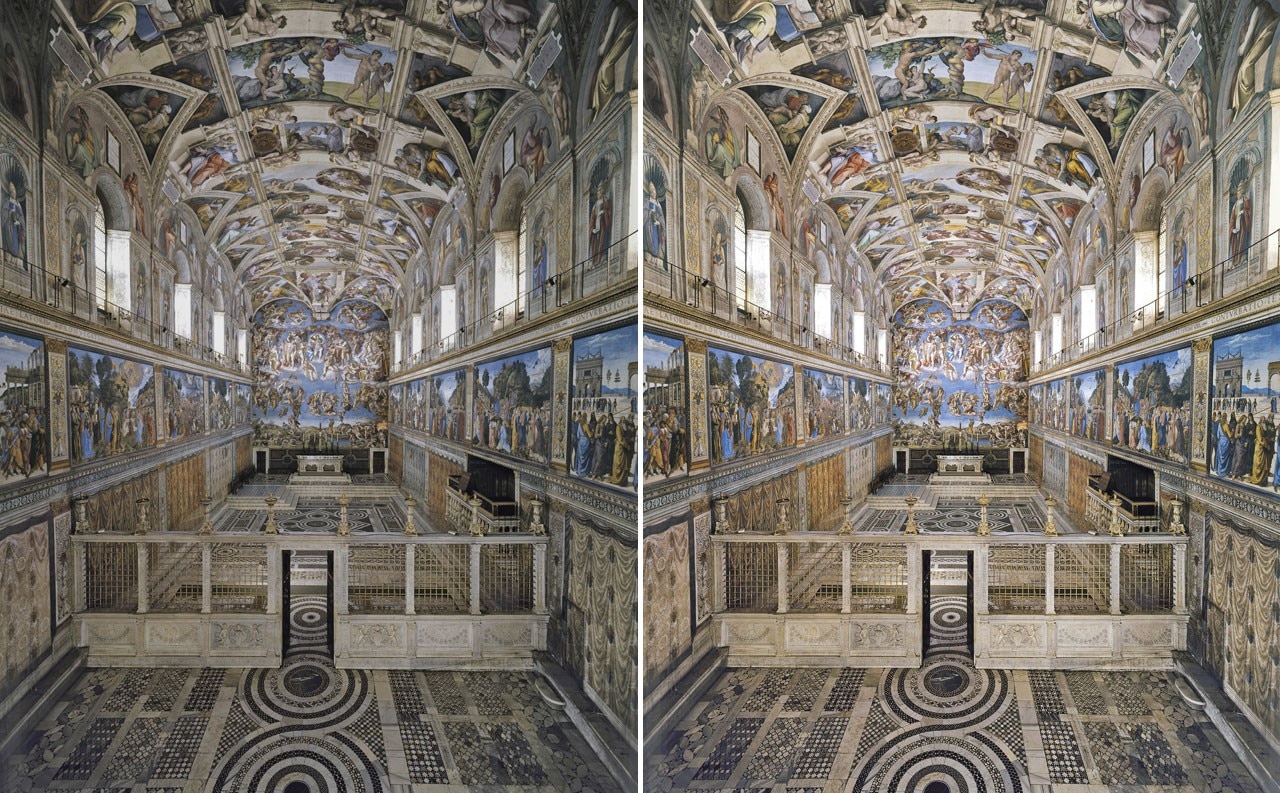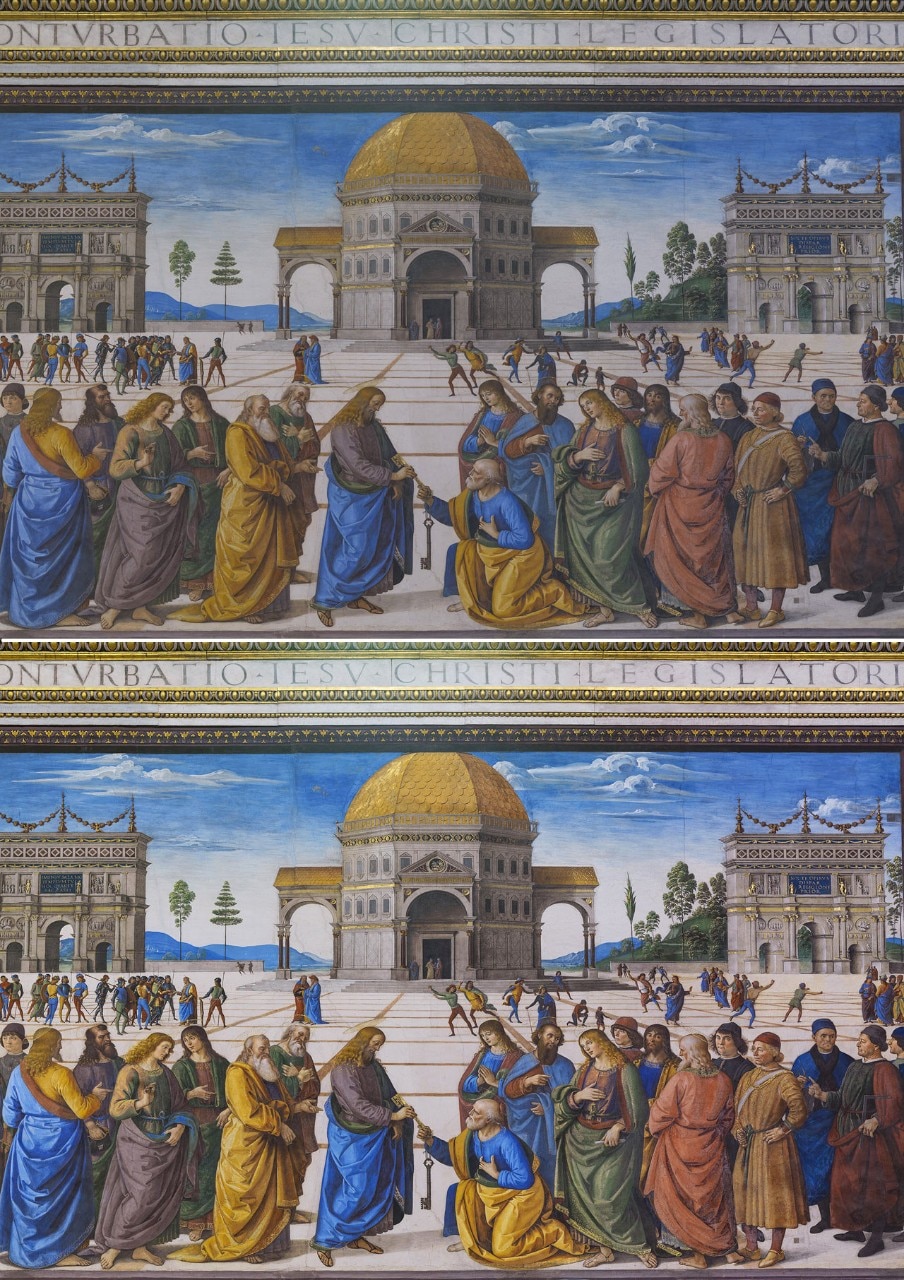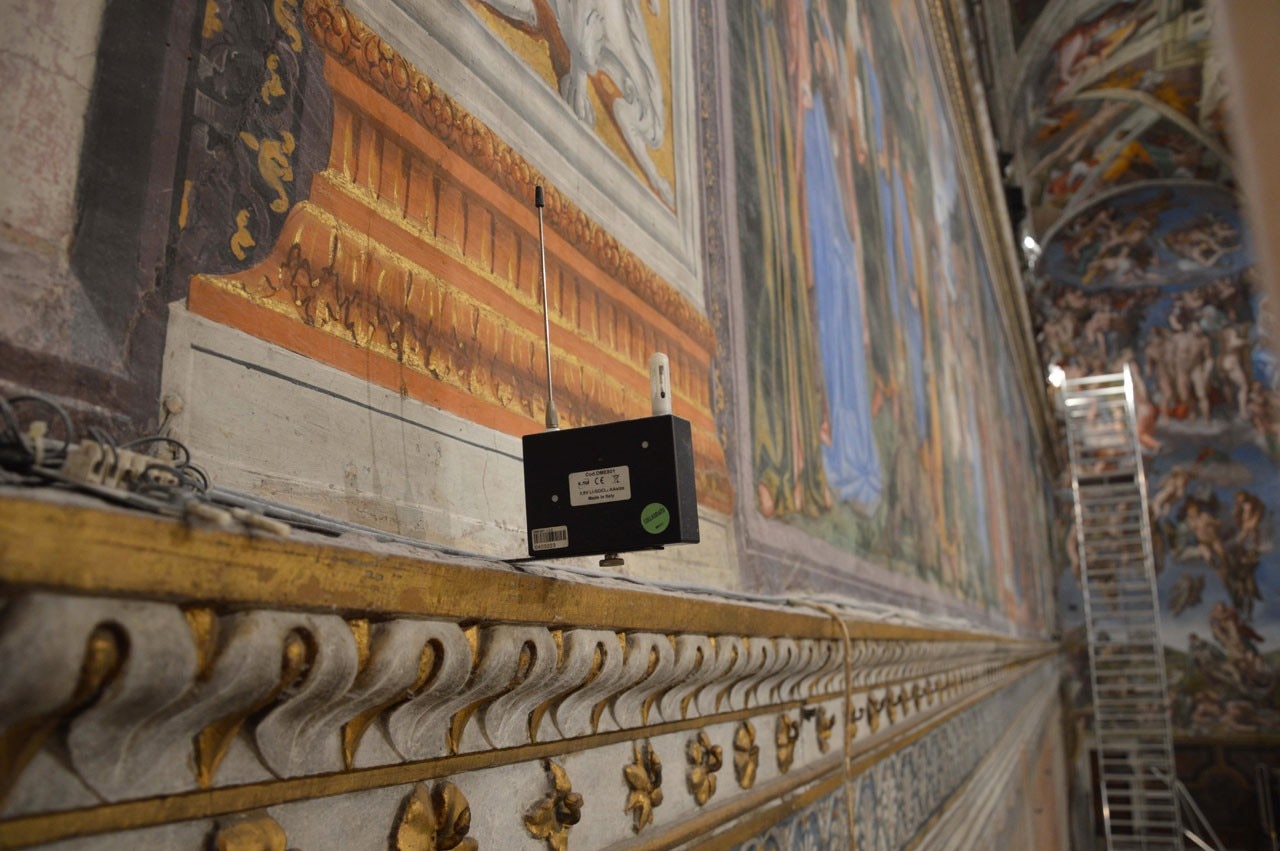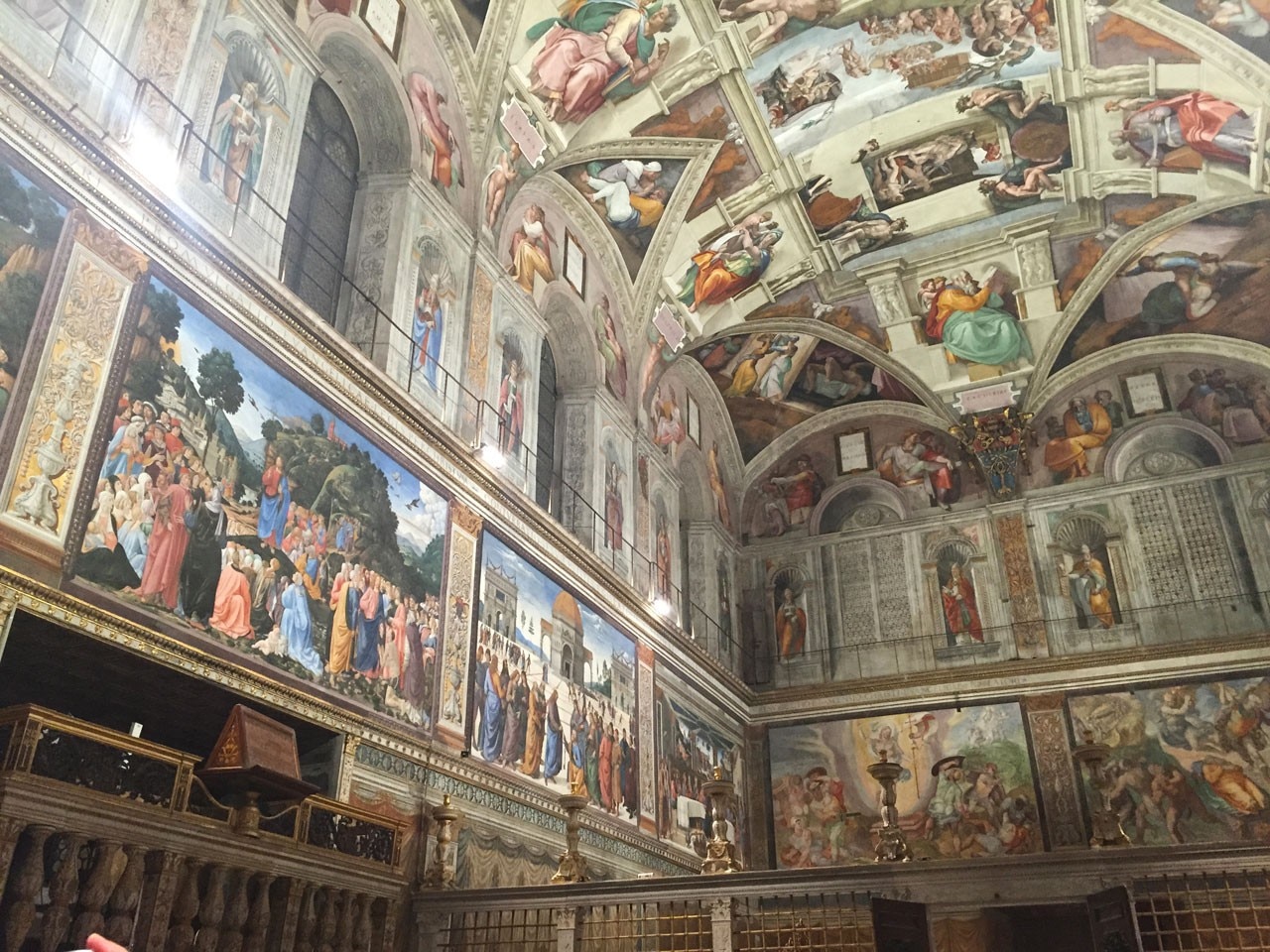

A new “mesopic” light, at once total and precise, gentle and unobtrusive, has restored to the Sistine Chapel a fresh entirety
What light for the world’s chapel?
Antonio Paolucci, director of the Vatican Museums, in presenting the new lighting of the Sistine Chapel to the public for the first time, on October 30th, defined this new light as “mesopic”. At once total and precise, gentle and unobtrusive, it has restored to the Sistine Chapel a fresh entirety. Above all, it has unified the vault, the Last Judgement, and the 15th century frescoes on the side walls.
“A gentle but total illumination was required,” explains Paolucci, “that would be non-invasive, respectful of the complex iconographic, stylistic and historical reality of the Chapel, and capable of rendering a calm, objective and at once delicate appreciation, of recounting in every detail and enabling us to comprehend the whole of that vast depicted catechism which three Popes (Sextus IV, Julius II and Paul III) commissioned to embellish the walls and ceiling of what has always been universally regarded as the world’s chapel”.
7000 LEDs and two new lamps designed, made and offered by Osram have achieved this rather more than extraordinary effect: a controlled light with no dazzle, realised by the wishes of historians and at the service of art.
The project was financed by the European Commission through LED4Art and Illuminate, with two pilot projects at a cost of over 2 million euros in collaboration with Osram (Germany and Italy), the University of Pannonia (Pannon Egyetem, Hungary), Fabertechnica (Italy), the Institut de Recerca en Energia de Catalunya (IREC, Sain), the Vatican City, and other partners in a joint consortium of companies.

The LED fittings can regulate the four colour channels – red, green, blue and warm white – to present the frescoes to visitors in the manner closest to how Michelangelo conceived them 500 years ago
An integral part of the project completed for the new lighting is that of the more technical and functional conditioning system. Developed by Carrier, this is of great importance in ensuring the future use of the Chapel by large numbers of visitors.
The “anthropic pressure” to which the Sistine Chapel is subjected (6 million visitors a year, with occasional peaks of over 20,000 a day) entailed a radical operation to gurantee changes of air, dust and pollution abatement, temperature and humidity control, and carbon dioxide at acceptable levels. This intervention eliminates the risk of a mixture of humidity, pollutants and carbon dioxide which could, in the long term, have jeopardised the correct conservation of the frescoes.

The new Carrier conditioning system uses specially designed software and components. Likewise, it relies on patented energy saving technologies that allow optimal conditioning to be maintained for the protecton of the paintings in the Chapel. A system of intelligent monitoring, linked to video applications by UTC Building & Industrial Systems, enables the HVAC system to read and anticipate visitor numbers and to regulate performance accordingly.
The new system doubles the efficiency and triples the capacity of the previous one, installed by the same supplier, Carrier, in the early 1990s.

